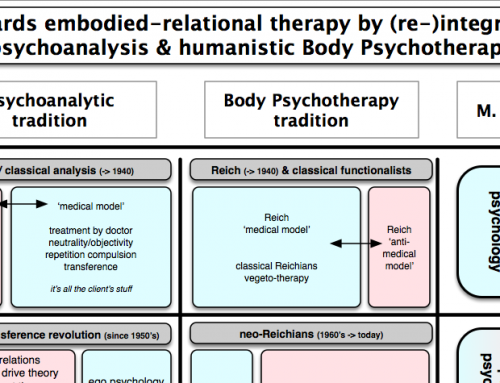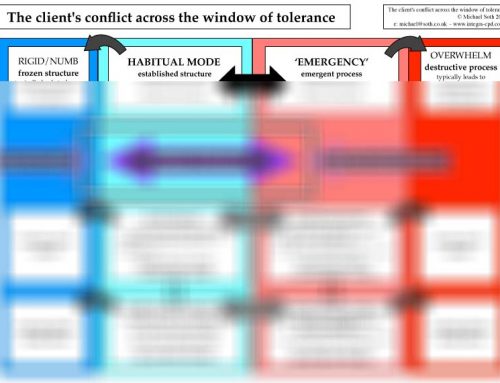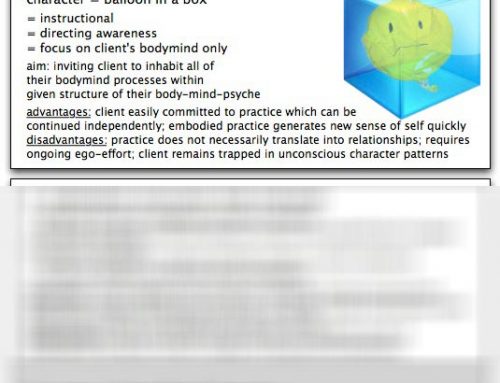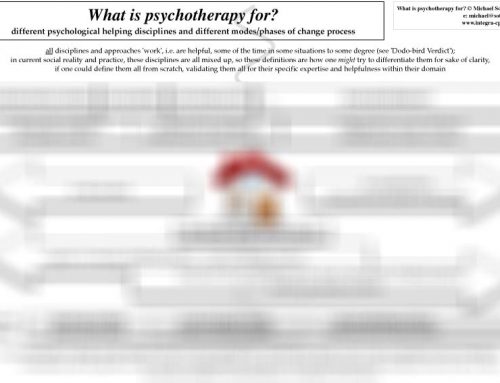Project Description
This handout is a later version of the original formulation how the client's internal conflict necessarily puts the therapist in conflict. The client's chronic conflict is formulated here in generic terms as a polarised split between 'habitual mode' and 'emergency' (usefully alluding to both the client's denied sense of emergency as well as the idea of emergent process). At any point in time in the therapeutic interaction, which of the two mutually exclusive polarities is the therapist going to champion and side with? If the therapist sides with the emergency, s/he is drawn into urgent action and objectifying interventions that override the client's habitual mode. If the therapist sides with the habitual mode, s/he is drawn into collusion that further ignores and denies the emergency. In this way the client's conflict necessarily becomes the therapist's conflict. The therapist's conflict can be understood as the pressure to take the therapeutically necessary capacities for both identifying and differentiating into their apparently countertherapeutic extremes (i.e. colluding and objectifying respectively), implying a loss of therapeutic position. However, from a relational perspective, we understand that supposedly countertherapeutic loss of therapeutic position as an avenue into transformative process, where the therapist is drawn into an enactment of the client's wounding. The arrow at the bottom is meant to indicate how the process of losing the therapeutic position is related to the three kinds of contact (see other handout).
To gain access to the full resource, please log-in if you are a member already (and then re-fresh this page after log-in), or to become a member of the site register here (it's free).







